What are braces?
Dental braces are dental appliances that can be used to align, straighten, or crowd teeth that are crowded, crooked, or out of place. Teenagers are frequently fitted with braces, but adults can also receive them. Braces gradually straighten and align your teeth so that you have a normal bite as you wear them. To improve their smile, some people obtain braces.
There are numerous treatments that can help straighten teeth if you have crooked teeth and/or a misaligned bite (an underbite or overbite), including braces and retainers, which are specialized, removable, or set devices that cover the exterior of your teeth and aid in maintaining their position.
Orthodontists specialize in fixing difficulties with your teeth, although many general dentists provide basic alignment and address other tooth concerns. Your chosen dentist or orthodontist will inquire about your health, do a clinical examination, digitally scan your teeth, take pictures of your face and teeth, and request head and mouth X-rays. They will use this information to develop a therapy strategy.
Perhaps all you need is a detachable retainer. You might require surgery if you have a significant overbite or underbite. However, most people require braces. Find more related content here The Main Steps To Getting A Dental Implant In Lahore.
Types of braces
The dentist or orthodontist will prescribe an appliance
specifically for your needs if braces are the best option for you. Bands,
wires, and other fixed or removable correction items may be included in the
braces. One technique does not always work.
Metal braces:
Metal is the typical material used for braces. They consist of
flexible wires or archwires that hold the brackets or bands together, as well
as brackets that are cemented to the front of your teeth or bands that go
around each tooth. Some braces also have metal ties or rubber bands connecting
the brackets to the wire. These bands apply extra pressure, which aids in
aligning and straightening your teeth. Your orthodontist may occasionally
require you to wear headgear at night. It applies additional pressure to assist
with teeth alignment. It is wearable and removable.
Ceramic braces:
Traditional braces' brackets are now also manufactured of ceramic
that is tooth-colored, making them less noticeable. Additionally, they can be
produced from gold, clear materials, or stainless steel.
Lingual braces:
These braces have brackets on the backs of your teeth that face your tongue. Less obvious are lingual braces. Find more related content here Smile Confidently With Your Brand New Dental Implants!
Clear aligners:
They may also be referred to as invisible braces. These are custom-fit translucent plastic trays that go over your teeth. Your teeth will be softly moved into the proper locations, and your smile will be straightened, using pressure. You can take out your aligners to eat, clean your teeth, or floss, but for best results, leave them in for at least 22 hours per day. To keep the aligners in place, the orthodontist may also glue tooth-colored pieces to your teeth.
What are Traditional braces?
In the past, braces were
painful to wear, and uncomfortable metal devices frequently injured the inside
of the mouth, resulting in ulcers and damage. The braces were also ugly, and
because braces are frequently worn by teens and young people, wearing them can
frequently result in a decrease in self-esteem. These days, braces are more
discrete and less obvious. Each tooth's brackets are smaller or sometimes
affixed to the rear of the teeth, where they are less noticeable. Brackets can
also be manufactured of ceramic, plastic, metal, or a combination of these
materials, and they can even be created to match your teeth. Additionally,
brackets can be altered and molded into various shapes, like
"smileys" of footballs.
There
are two types of braces: fixed, which must be worn all the time except when a
dentist removes them, and removable, which the patient can take out at any
time.
How to apply braces: The steps
A dentist would often evaluate the condition of the teeth before recommending how braces should be used. Find more related content here Everything You Needs To Know About Teeth Whitening Strips In Pakistan.
The three fundamental stages of treatment for crooked teeth are typical as follows:
- Initial brace placement: To hold the braces in place, brackets are affixed to teeth along with an archwire and occasionally ring-shaped bands.
- The brace is frequently adjusted to attain the required alignment. After an adjustment or tightness, the mouth could feel sore for a few days.
- To keep the teeth stable after having braces removed, wear a retainer.
It
is crucial to maintain proper oral hygiene for the one to three years that most
patients are required to wear braces. Daily tooth brushing and flossing, eating
a healthy, balanced diet, and routine dental visits are all crucial for the
success of braces.
What is Invisalign?
With the use of
Invisalign, teeth can be straightened without the usage of metal braces. A
series of clear braces created to order called Invisalign covers your teeth and
gradually moves them into the right position. They are less apparent than
conventional metal braces since they are clear and removable.
The majority of
people wish to whiten their teeth but believe that the only choice is to use
conventional metal braces. There are no metal brackets or wires to distract
from your smile when receiving treatment with Invisalign clear braces. Your
teeth can be comfortably, attractively, and precisely aligned with Invisalign
transparent braces in half the time it would take with conventional braces.
Invisalign is a
successful and discrete orthodontic treatment option, whether you are an adult
who has put off treatment for years or a parent considering orthodontic
treatment for your adolescent.
Since its establishment in 1997, Invisalign braces have offered many advantages. As opposed to braces, which enclose a
sizable piece of metal in your mouth, Invisalign uses translucent plastic
aligners that are almost undetectable. They are retainers that are customized
to fit your teeth and are made with the goal of assisting you in achieving
better alignment in mind. Although clear braces and invisible braces are now
available, these retainers tend to disappear into your face and are barely
discernible. In order to develop a treatment plan to straighten your teeth,
your orthodontic office will first take X-rays of your mouth and jaw. The
aligners are made once the x-rays are taken.
These invisible aligners are a
significant improvement over regular braces in that they are worn all the time
yet can be taken out to eat. Every two weeks or so, the Invisalign aligners are
switched out to move you closer to the smile you desire.
Invisalign made from
The BPA-free plastic
Invisalign clear aligners are much more comfortable than conventional metal
braces. Your teeth can be straightened using these specialized transparent
aligners, giving you the stunning smile you've always desired. You will have to consult with a dentist before they provide you with Invisalign clear aligners so they can go through your smile goals and what to anticipate from your treatment.
Who can use these transparent braces?
Adults and teenagers can both
wear Invisalign. In addition to correcting overbites, underbites, open bites,
cross bites, and overcrowded teeth, these clear braces are utilized to close
spaces between teeth. Dentist experts can decide if Invisalign is the best orthodontic
treatment for you after examining your teeth and taking x-rays of them.
What happens when you wear Invisalign?
Invisalign is
simple to use and seamlessly integrates into your daily routine. You will cover
your teeth with transparent braces after you receive your aligners. Each pair
of aligners will be worn for two weeks before you move on to the subsequent
set. Your aligners will first fit snugly since they are made to shift your
teeth slowly and precisely. Your teeth will progressively reposition themselves
after a few days. After some time, you'll notice that your aligners feel a
little loose. Don't switch them too soon, even if they start to feel loose. For
the entire two weeks, wear them. Your teeth and gums have time to adapt to the
new position as a result. Your treatment strategy will be hampered if
you switch aligners too soon.
You will visit
any dentist expert for an appointment every six weeks to have your aligners checked and
to see how your treatment is going. These examinations aid him in determining
whether your treatment plan or the aligners need to be modified.
Overall treatment time
The typical
Invisalign treatment period is one year, although treatment times vary
depending on each patient's age and unique demands. Since every situation is
unique, you'll get an anticipated treatment time after your teeth have been
checked and digital photos have been taken.
Advantages of Invisalign
It's critical to
understand the benefits of Invisalign over conventional braces while weighing
your options for orthodontic treatment.
- These braces are transparent. You won't be noticed wearing them by many people.
- When compared to conventional braces, Invisalign allows for more accurate tooth movement.
- With Invisalign, maintaining good oral health is simpler. When you eat, clean your teeth, and floss, you will take the aligners out.
- These aligners are far more comfortable than metal braces. They don't aggravate your gums or teeth.
- Time is saved using Invisalign. You will visit the dentist less frequently with Invisalign than with braces, which need more frequent appointments to change the archwire and make adjustments. Treatment times are frequently shortened as well.
Braces Vs Invisalign
There are now innumerable orthodontic
treatment choices available than ever before for straightening teeth. Among
them, regular braces and Invisalign aligners are the two most common options.
While neither is infallibly superior to the other, each offers a unique set of
advantages to each patient.
Every patient wants the best orthodontic treatment for their teeth. So, before they go for their treatment, they will have to know about both choices and which one is best for them therefore, let's briefly
discuss the differences between the two choices before you schedule an
appointment.
There are five differences between Invisalign aligners & braces
Invisalign aligners and braces both straighten teeth and modify the way they fit together. However, because you must select one, we have covered this blog to assist you in taking swift action. Explore all of their differences in depth so that you have the knowledge necessary to choose the option that will best protect your teeth and oral health.
Medication Duration
Even though the severity of the patient's situation will determine the length of treatment, most patients get benefits between 10 and 24 months. However, a patient may need to wear the aligners for a long time if they have severely misaligned teeth and bites. After a few months of treatment, some of them also need minor adjustments.
Similarly, there are numerous variables that
affect how long treatment takes with conventional braces. The extent of the
issue, the patient's mouth's space, and the distance the teeth must go are
among them. The condition of the patient's gums, teeth, and supporting bones
is also taken into account. However, conventional braces often need to be
worn for a period of one to three.
Effectiveness
Most of the time, many patients choose aligners over traditional braces because they are more comfortable, discrete, and simple to care for. Furthermore, dental studies demonstrate that individuals who use aligners experience shorter treatment times than those who use conventional braces.
It is crucial to
remember that Invisalign aligners do not offer the same level of precision as
conventional braces. They are thus a preferable choice for those with less
serious orthodontic issues. In the end, it all comes down to how well your
teeth are doing, and our best research does everything possible to
provide the appropriate care method for our audience.
Eat Differences
The Invisalign
trays must be worn by patients for 20 to 22 hours each day. Only water, food,
and oral hygiene procedures are permitted to be done when the trays are
removed. The treatment approach doesn't call for any dietary adjustments
because the aligners don't have any brackets or wires. But before reapplying
the aligners, wash your teeth to avoid discoloration.
Conversely,
patients who receive conventional orthodontic braces must modify their diet due
to the sensitivity of the wires and brackets. Patients must take care of them
to prevent them from separating from the teeth because they are easily damaged.
So it's important
to stay away from foods like chewing gum, crackers, and popcorn that are
difficult to chew or sticky. Furthermore, since sugary meals and drinks promote
the excessive formation of plaque, it's important to limit your intake of them.
Optics
The fact that Invisalign is virtually invisible is one of the main reasons why patients choose it over conventional braces to straighten their teeth and smile. They are more appealing to teens since, unlike the conventional treatment method, they do not bring attention to the teeth. Also removable are the aligner trays, which are helpful when you're eating or drinking.
Therefore, while
traditional braces are a more overt alternative than Invisalign aligners, they
are more exact in shifting the jaw and teeth. Comparatively, aligners permit
less demineralization than conventional braces, which reduces the risk of tooth
shortness and discoloration. In any situation, they both have the ability to
straighten out crooked teeth and close spaces between teeth.
Capacity for pain
Ceramic and metal are not consistently present in our mouths as it is. While both aligners and conventional braces might cause a little discomfort, the pain associated with braces is far more intense. In fact, during the first few months of treatment, patients wearing metallic braces also experience a decline in their health. They must become acclimated to:
- Chapped Lips: The lips may not fully shut because they have been stretched to create room for the brackets that are positioned beneath the surface, which can produce a dry mouth and chapped lips.
- Scrapers & Blisters: Brackets and wires that protrude from the teeth might irritate the lips and cause scrapes and blisters.
- Mouth Sores: Swelling is frequent while wearing a brace, and while wax can assist, your mouth will still be tender and painful until you have hard skin.
Traditional
braces and aligners both cause discomfort when used to straighten teeth. The
latter's trays, on the other hand, are smooth and thin and do not tug lips or
poke gums. The delicate oral tissues won't be affected, although the teeth may
be painful.
Pick one of the best before an orthodontic treatment
One of the first
things people notice in each other is a grin. Therefore, spending time and
money to make sure that your teeth feel and look as good as possible makes
great sense. Also, make an appointment with any Dental experts to discuss your
case. At any Dental Hospital, They will start your treatment right immediately following a preliminary examination
and a discussion of all the treatment specifics.


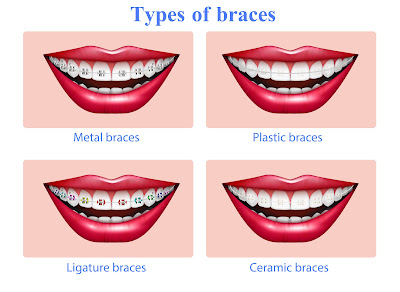

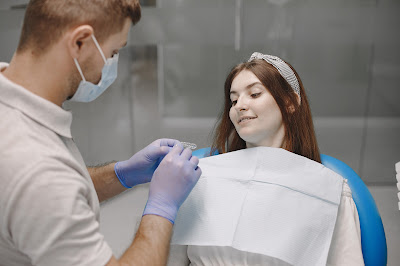
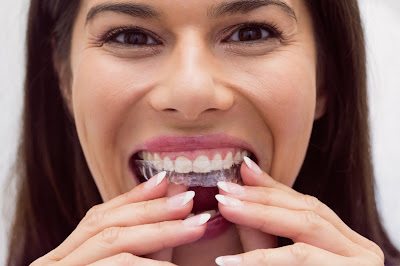
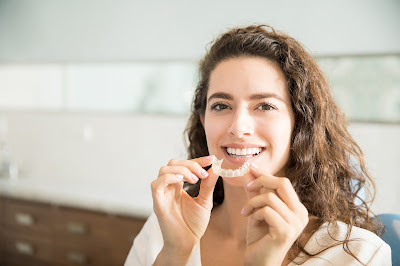



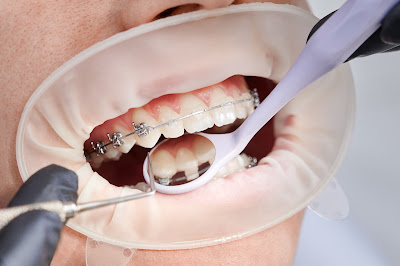




No comments:
Post a Comment